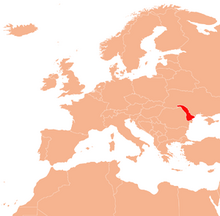



Bessarabia (Ukrainian: Бессарабія, Russian: Bessarabia, Bulgarian: Bessarabia, German: Bessarabien) is the eastern part (beyond the Prut) a Historical principality of Moldova.
Bessarabia region (oblast) (in Russian, Бессарабская область) was an administrative unit (initially autonomous) within Of the Russian Empire, established after annexation by Russia of the eastern part of the medieval Romanian Principality - Moldova into the 1812. Through 1871, the Russian tsar issued a ucaz / law "On the suspension of the study of the Romanian language in the schools of Bessarabia" because - it was motivated in that law -, "in the Russian Empire the local languages are not studied"[1]. In the same year the last - so-called "privileges", still left to Bessarabia after annexation, were canceled.
To know
The name of Bessarabia was given by The Russian Empire into the 1812 territory voivodeship of Moldova from Prut and Nistru attached by The Treaty of Bucharest of 1812, with RaiaHotinului and with historical Bessarabia (in Turkish languageBugeac) ceded by The Ottoman Empire after the signing of the peace treaty from Bucharest of the year 1812 following the end of the Russo-Turkish War (1806-1812). The fact that part of the territory of the voivodeship of Moldova was ceded to Russia, despite the Romanian-Ottoman treaty guaranteeing the integrity of Moldova, is due to the dishonest skill of the French negotiator Gaspard Louis de Langeron who served the tsar's interests.[2].
Geography
The surface of Bessarabia is 44,422 km², of which 33,843 km² currently belong Republic of Moldova, and 10,579 km² belong ukraine. The distance from the northernmost point to the southernmost is 350 km, and from the westernmost to the easternmost is 150 km.
